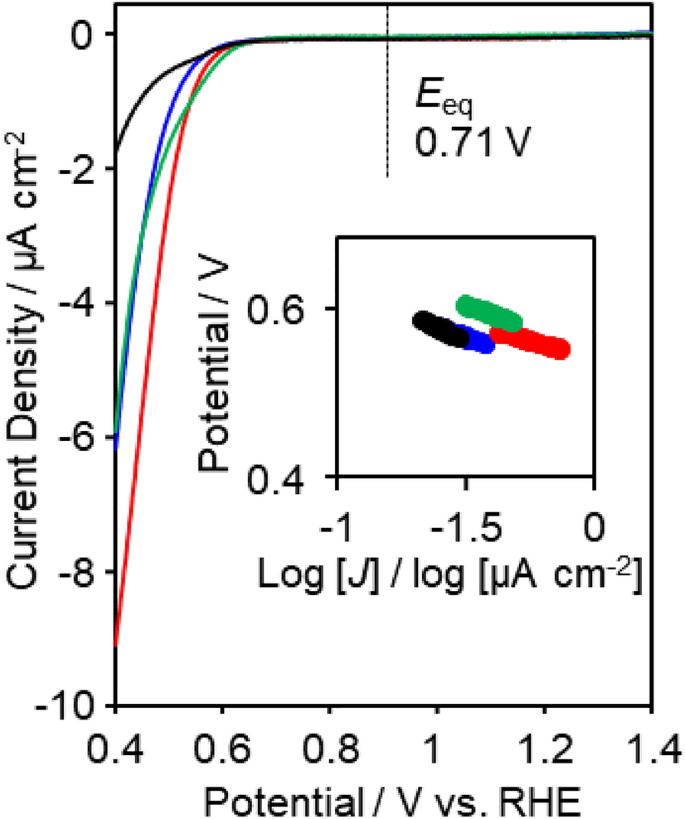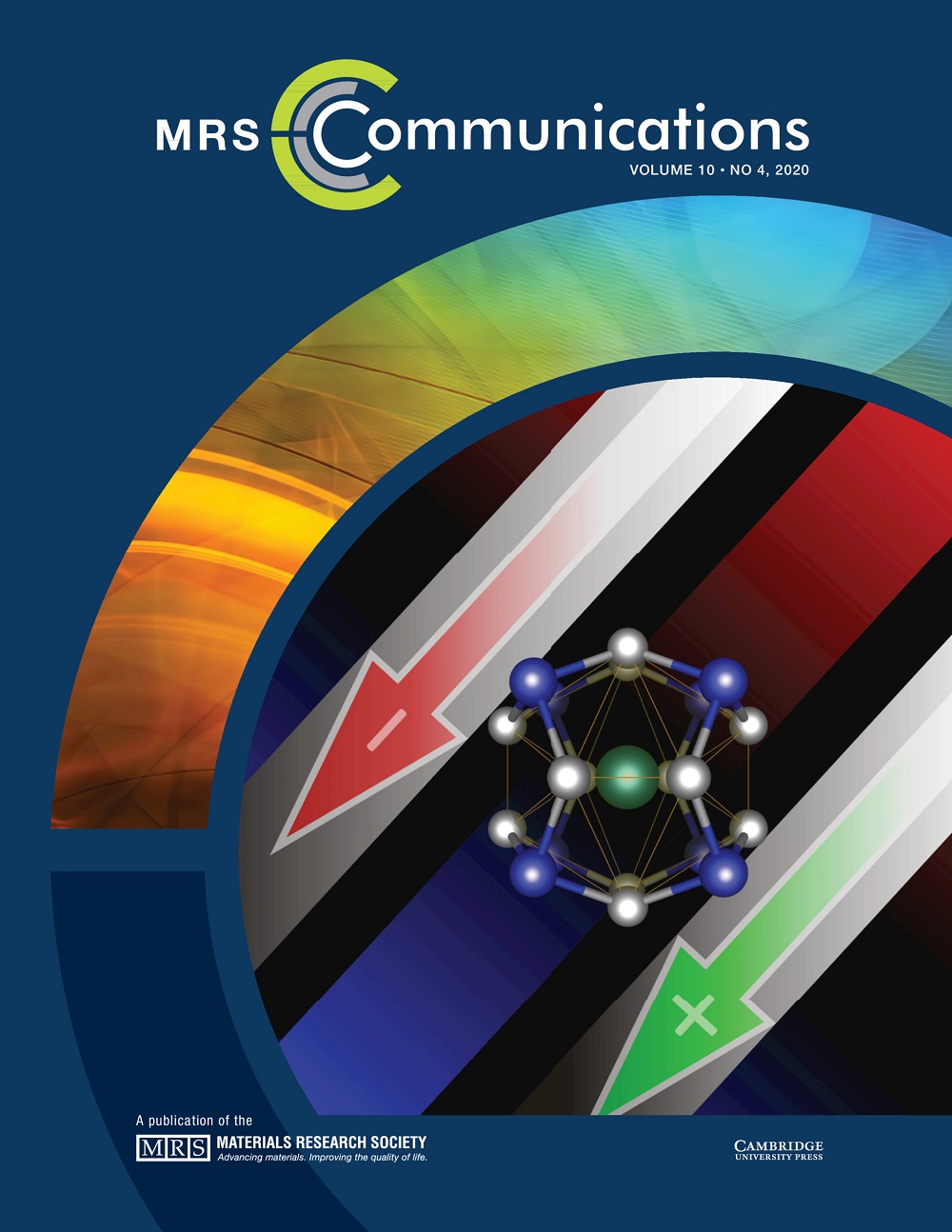分子掺杂聚噻吩薄膜作为氧气还原成过氧化氢的高效光电阴极
IF 2.3
4区 材料科学
Q3 MATERIALS SCIENCE, MULTIDISCIPLINARY
引用次数: 0
摘要
分子掺杂聚(3-己基噻吩)(P3HT)首次被用作将氧气还原成 H2O2 的光电阴极。为此,在 P3HT 薄膜中掺入了六氮三苯基六甲腈,从而增加了在黑暗中施加负电位时的氧还原电流。用可见光照射掺杂的 P3HT 薄膜可显著促进高电流密度的氧还原,并使起始电位超过反应平衡电位。本文结合能级图讨论了掺杂 P3HT 薄膜的氧还原性能。本文章由计算机程序翻译,如有差异,请以英文原文为准。

Molecularly doped polythiophene film as an efficient photocathode for oxygen reduction to hydrogen peroxide
The molecularly doped poly(3-hexylthiophene) (P3HT) was used for the first time as a photocathode for reducing oxygen to H2O2. For this purpose, a P3HT film was doped with hexaazatriphenylenehexacarbonitrile, which increased the oxygen reduction current at an applied negative potential in the dark. Visible light illumination of the doped P3HT film significantly facilitated the oxygen reduction with a high current density and shifted the onset potential beyond the reaction equilibrium potential. The oxygen reduction performance of the doped P3HT film is discussed in relation to the energy level diagram.
Graphical abstract
求助全文
通过发布文献求助,成功后即可免费获取论文全文。
去求助
来源期刊

MRS Communications
MATERIALS SCIENCE, MULTIDISCIPLINARY-
CiteScore
2.60
自引率
10.50%
发文量
166
审稿时长
>12 weeks
期刊介绍:
MRS Communications is a full-color, high-impact journal focused on rapid publication of completed research with broad appeal to the materials community. MRS Communications offers a rapid but rigorous peer-review process and time to publication. Leveraging its access to the far-reaching technical expertise of MRS members and leading materials researchers from around the world, the journal boasts an experienced and highly respected board of principal editors and reviewers.
 求助内容:
求助内容: 应助结果提醒方式:
应助结果提醒方式:


